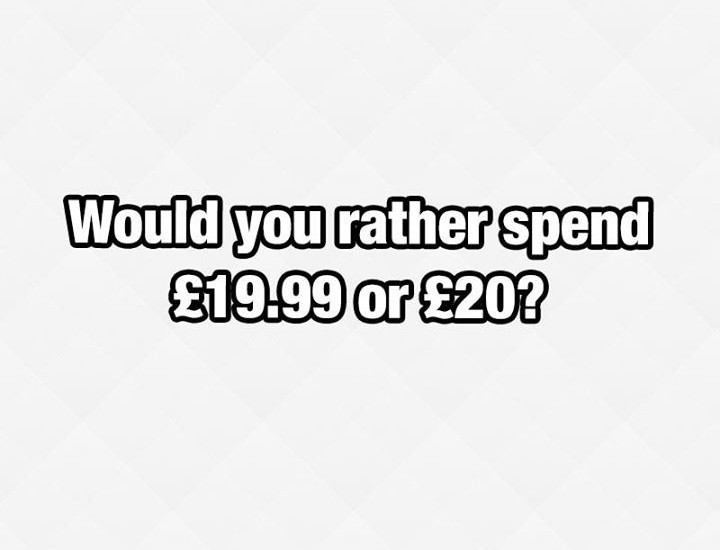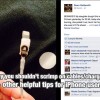Do you prefer to buy something that is priced at £19.99 or £20?
It’s a common trick (known as the left-digit effect) that marketing departments/shop owners etc play on their customers, basically they drop 1p, 2p, 3p or 5p etc off a round number to make it more appealing to shoppers.
New research has shown that this technique of non-rounded prices (e.g. £99.95) works especially well when someone is rationally thinking about the pros/cons of a utilitarian item, in other words something that is designed to be practical rather than look pretty e.g. a dishwasher.
However from their study rounded numbers (e.g. £100) were more appealing if the item you’re looking at was part of a emotive sale, like someone browsing for a digital camera to document a future holiday or a dress for a first date.
So how does this effect me? In the future (or more likely already) websites could change prices on the fly depending on your previous browsing habits, say you’ve searched for sun cream, then swimming shorts… oh and then you see this advert for digital cameras…. The website’s algorithm could take a calculated guess that you’re going on holiday and the camera is to document this (an emotive purchase), so before you’ve even loaded the camera section the products they want you to buy are updated to whole numbers, increasing their appeal and increasing the likelihood of you purchasing the camera from them immediately.
The research is only a starting point however we found it interesting and thought others would as well. We guess the lesson here is always think twice before buying.
Details of the study + more reading if you’re interested > http://10ws.co/1ybontG & http://10ws.co/1pt3gEi













![How to remove permanent marker from everything [Infographic]](https://10ways.com/wp-content/uploads/2016/02/marker-en-100x100.jpg)



